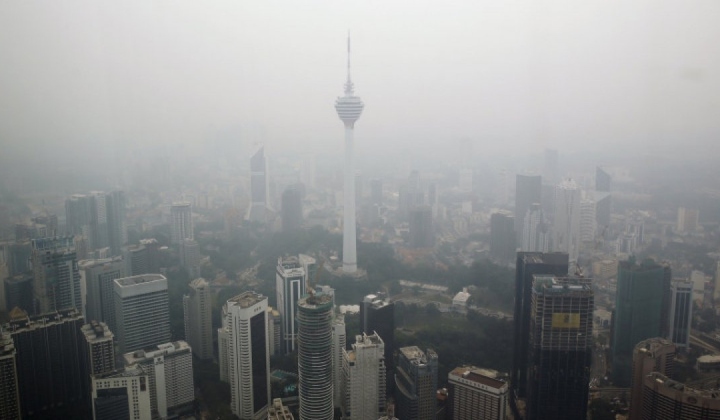Everything you need to know about haze now that it’s back

We’ll assume that by now you’ve seen (or smelled) that haze season is back.
While we’re sure you’re aware of everything you’ll need to do to protect yourselves from these “harmful particlesâ€, do you know what these “harmful particles†actually are?
Well, to save you some time from a Google deep dive, we’ve done the deep dive for you.
1. Eh, what is HAZE ah?
Haze is an atmospheric phenomenon where particulate matter such as dust, smoke, and dry particles are emitted directly into the atmosphere to a point where it is sufficient enough to impair visibility and obscure the sky’s clarity.

When seen from afar, and depending on the direction of view, haze can appear to have a bluish or brownish tint.
Haze pollution is called “transboundary†when it’s density and extent is so great at the source that it remains at measurable levels after crossing into the air space of another country.Â
2. What you mean by “particulate matter�
There are two types of particulate matter.
“Coarse†particles are larger than 2.5 microns and generally come from vehicles travelling on dirt and sandy roads, crushing and grinding operations such as cement manufacturing, and combustion sources.
“Fine†particles are less than 2.5 microns result from fuel combustion in vehicles, power plants and industrial facilities, wildfires and forest burning.

While coarse particles are flushed out of the atmosphere within several hours up to a day, fine particles can stay in the atmosphere for several weeks and travel extensive distances.
3. This “particulate matter†come from where?
Haze is commonly caused by open burning and smoke from factories and vehicles.

This time around, the haze affecting Malaysia is caused by a moderate amount of smog moving from hot spots in the central and southern parts of Sumatra due to the Southwest Monsoon winds.

4. Then it is dangerous meh?
Malaysia uses the Air Pollution Index (API or IPU in Bahasa Malaysia) which looks at the levels of 5 chemical compounds when deciding how safe is the air in an area.
These five compounds are: ozone, carbon monoxide, nitrogen dioxide and sulphur dioxide, as well as the concentration of 10 microns (PM10) particulates in the air.

Particulate matter less than 10 microns in size, including fine particles less than 2.5 microns, can penetrate deep into the lungs.
In fact, exposure to particulate pollution has been linked with premature death, difficult breathing, aggravated asthma, increased hospital admissions and emergency room visits, and increased respiratory symptoms in children.

With these facts in mind, here are some tips on how stay safe!
Starving forensic investigator turned writer cause she couldn't find a job. Used to search for killers now searches for killer stories.





